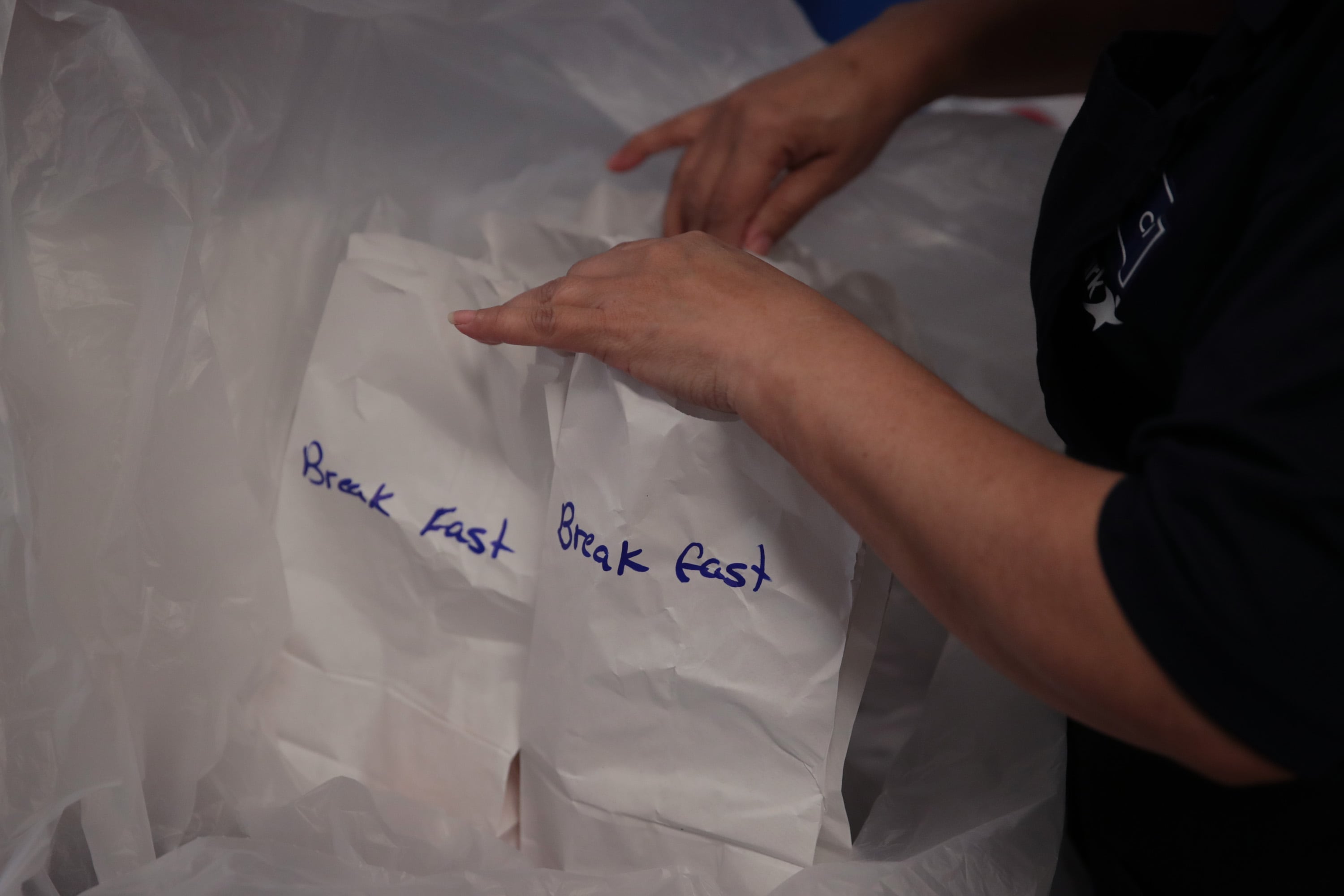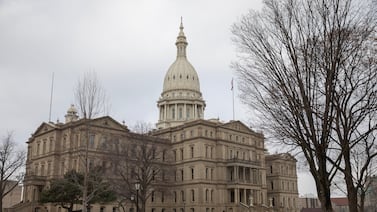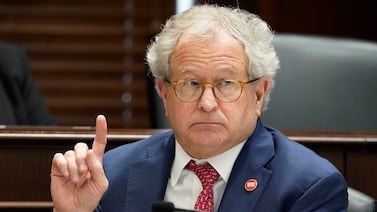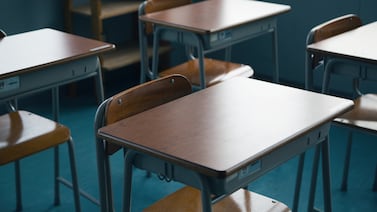Starting Tuesday, Chicago will nearly double the number of school campuses where families can pick up free meals, up from 277 this summer to more than 450 this fall.
The expansion of meal sites underscores the critical social service role schools have played during the pandemic, providing basic services to city families whose lives have been destabilized by illness, job loss, and temporary closings of schools and child care centers.
The unemployment rate in the region continues to be in the double digits, with 12.3% of workers in Chicago’s metropolitan area out of work in July and rates in prior months reaching 16%. One year ago, rates were consistently less than 4% in the region in the summer months, according to the state’s department of employment security.
Chicago began serving free food bags when it closed campuses last March and, as of Wednesday, the school district had distributed 21 million meals, a spokeswoman said. The district’s meal kits include three breakfasts and three lunches, ranging from bagels and yogurt to cheese pizzas, hamburgers, and sandwiches.
A full list of school sites will be made public by the end of the week, the district said.
The federal government has given districts considerable flexibility in how they design meal programs for families during the pandemic. In addition to food, some local campuses have coordinated diaper giveaways and supply pickups.
The cost of the district’s pandemic response is now estimated at more than $200 million and climbing, with at least $128 million of that spending so far covered by federal emergency relief dollars. Chicago Public Schools can apply for reimbursements for up to $206 million, though some of that money must go to private schools within its boundaries — a figure currently under dispute.
Separately, the district earmarked another $75 million in its 2020-21 budget for additional emergency expenditures, a list that includes the free meal sites, computers and broadband access, personal protective equipment, cleaning supplies, and some contact tracing.
Chicago is rolling out a broadband access program called Chicago Connected that aims to sign up 100,000 students from low-income families; so far, 22,000 have signed up. The $50 million project is partially underwritten by some philanthropy.
School district officials have planned for a second round of coronavirus relief, going so far as to balance a budget plan for the coming school year in anticipation of another $343 million from Washington. The House and Senate are currently at a stalemate about a second relief effort.
School buildings remain ostensibly closed to students through at least early November, when Chicago has said it intends to return to some in-person learning under a hybrid plan if health officials deem it safe to do so. But security guards, custodians, food service workers, and administrators continue to staff some buildings, and that has caused some tension between the city’s labor unions and district officials.






